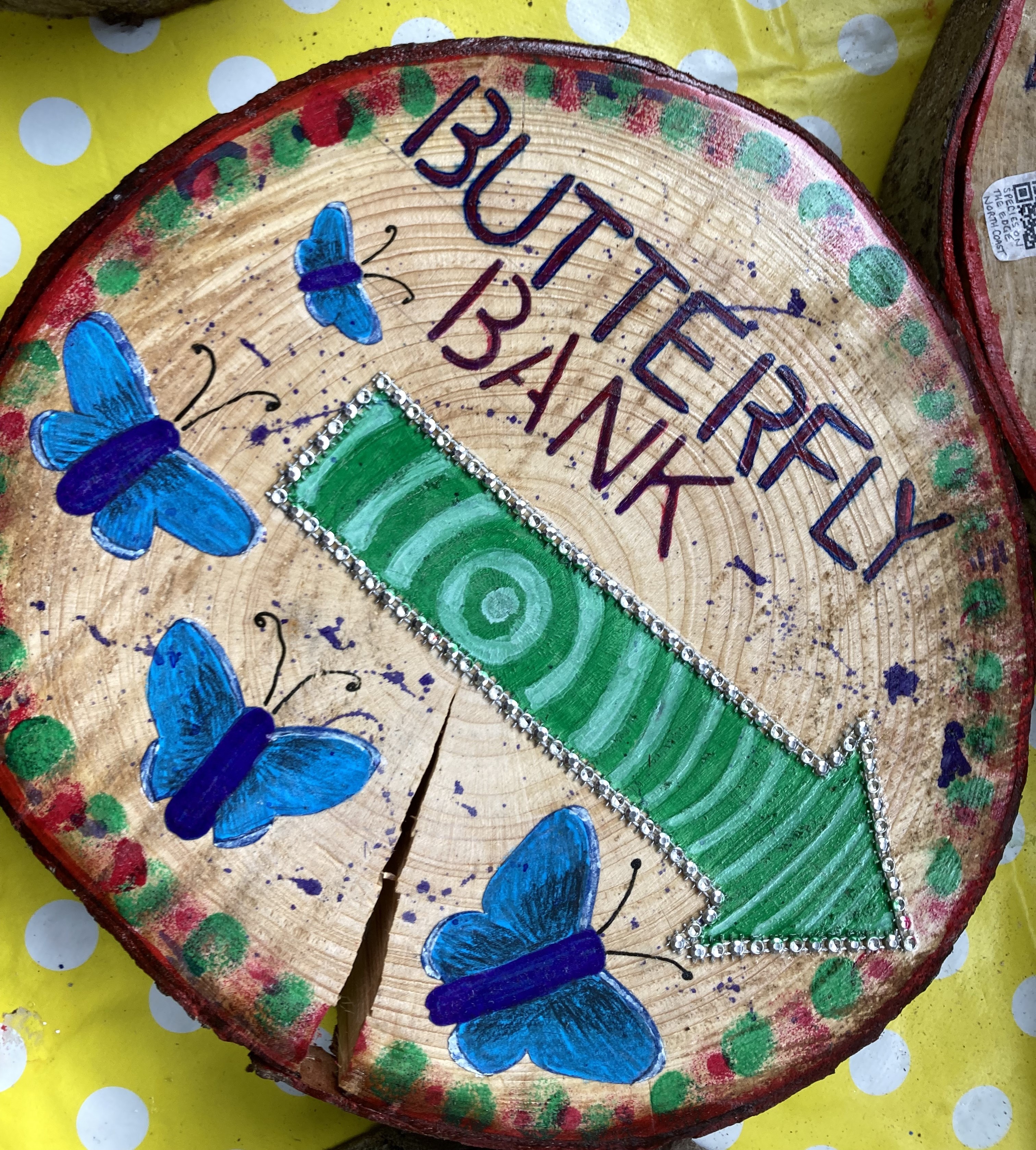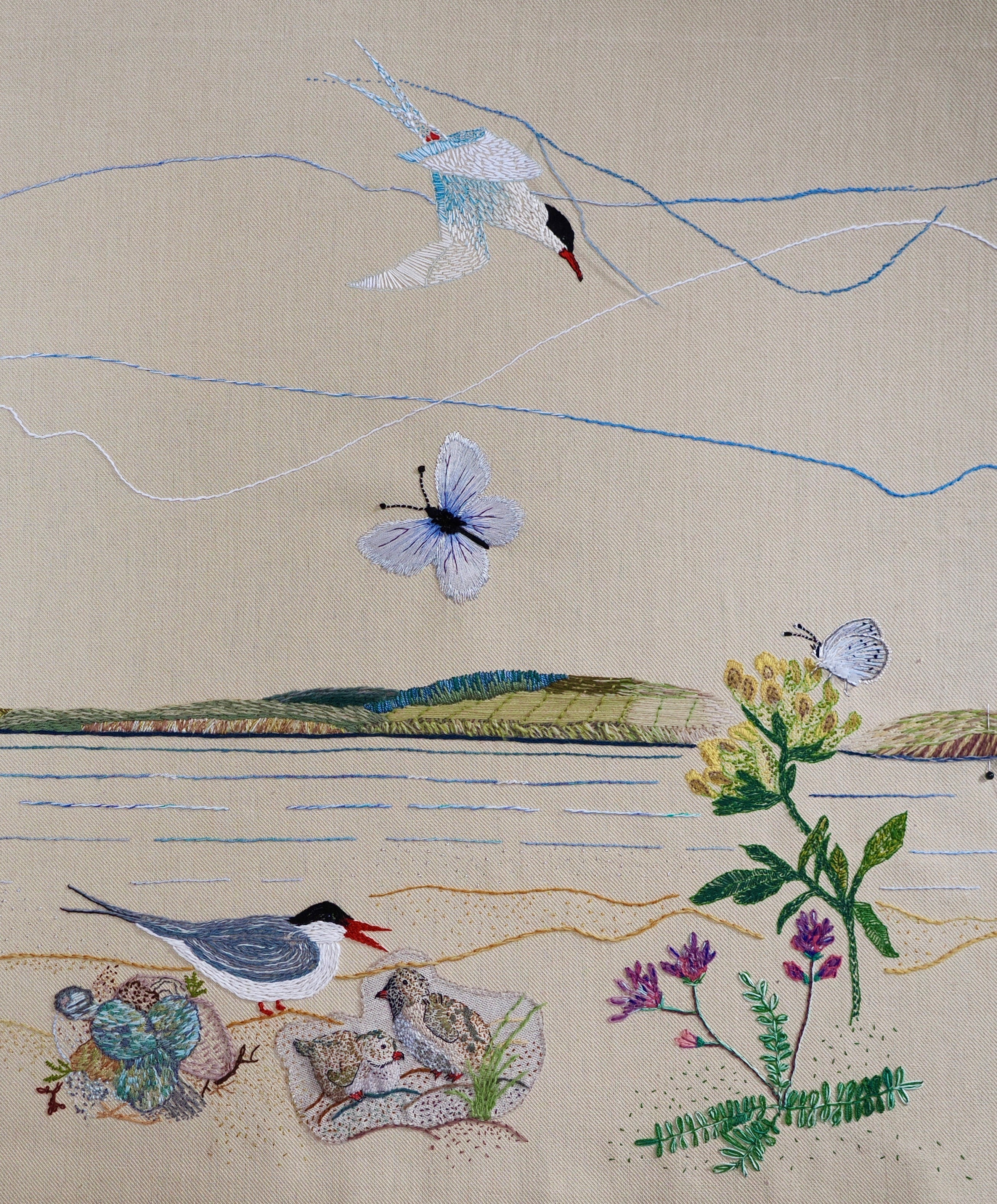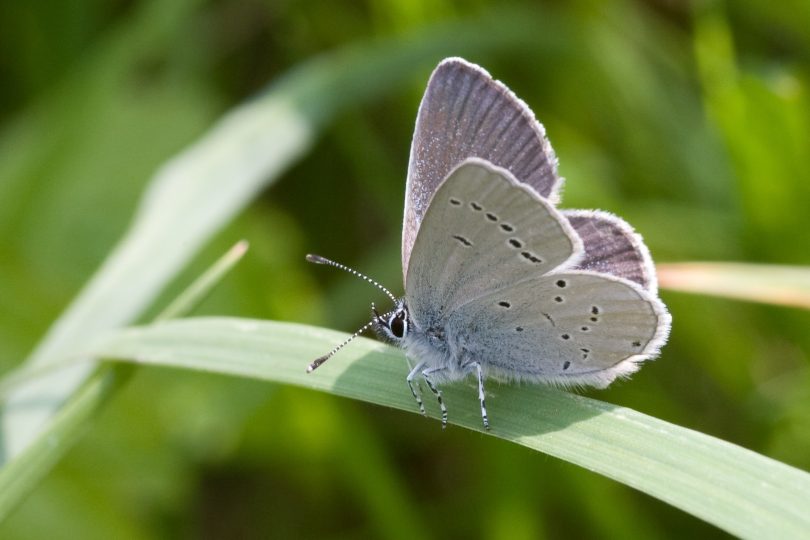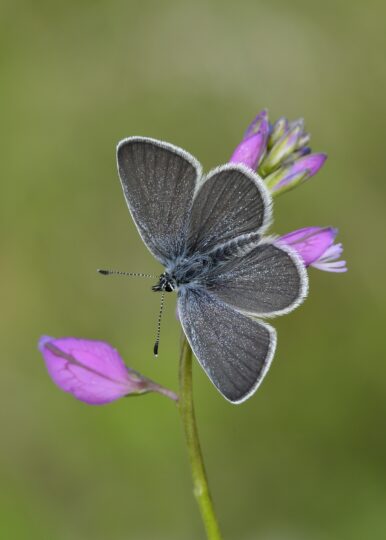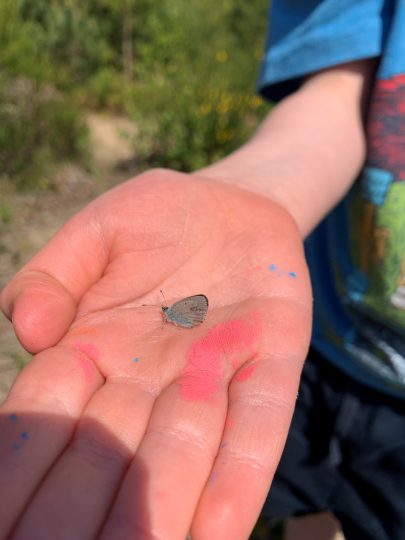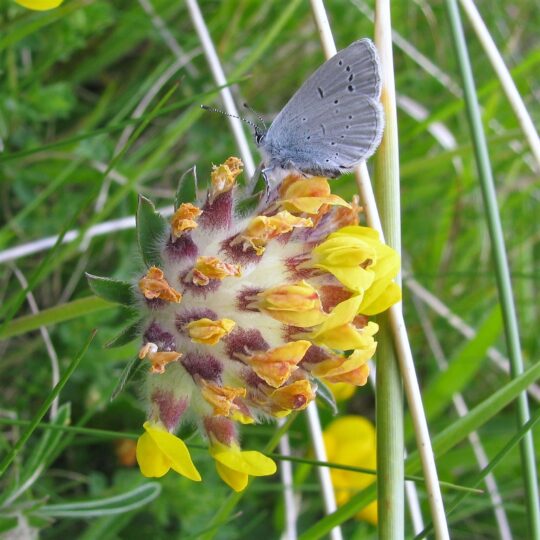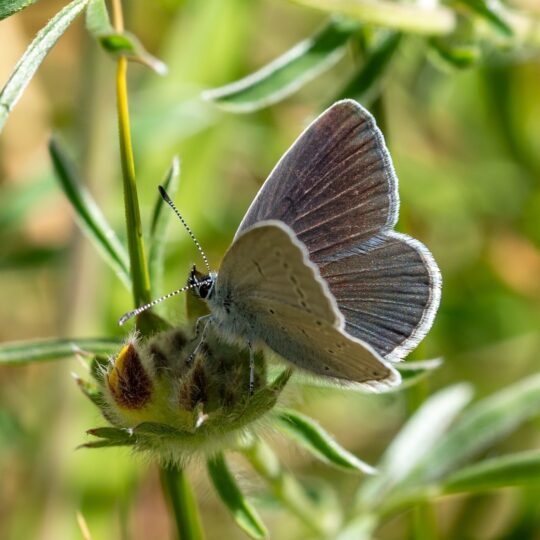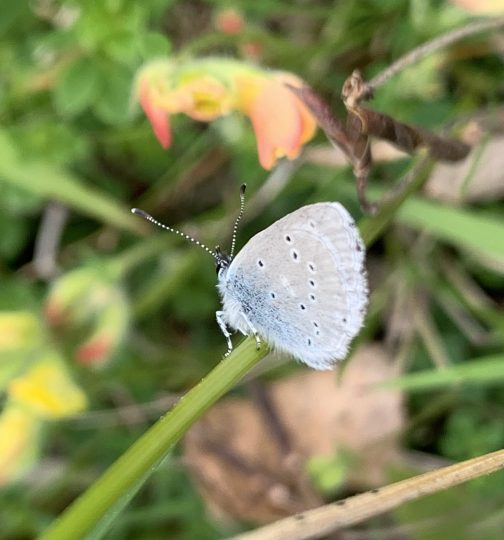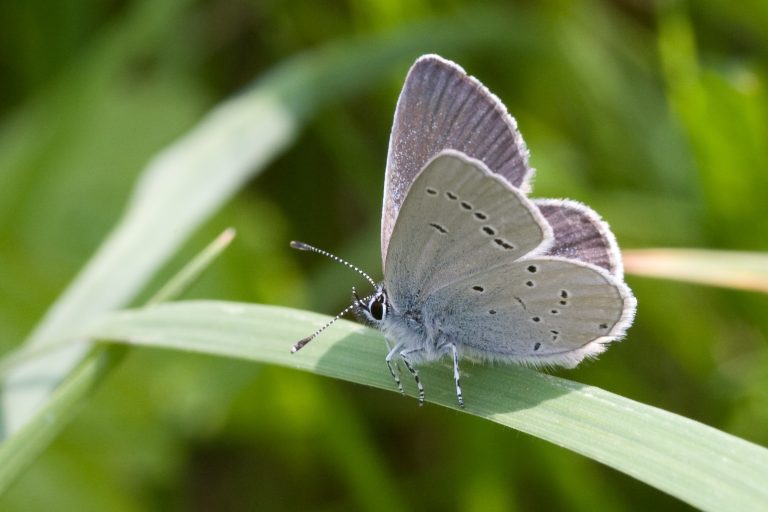
Key facts
- Gaelic name: An gorman-beag
- Wingspan: 18 – 27mm
- Distribution in UK: South-central England, east Scottish coast, south coast of Wales and the east and west coast of Ireland.
- When to see adults: May – August
- Status: UK BAP Priority Species
- Species on the Edge areas: East Coast; North Coast
Species information
How to identify
The small blue is the UK’s smallest butterfly with a wingspan of 18-25mm. Male small blues tend to be dark grey black with a hint of silvery/blue scales at the base of wings. Females are much browner in colour with no sign of blue. Their underwings are silver-blue dotted with black.
Lifecycle
Egg: mid May – mid July
Caterpillar: mid June – late April
Pupa: mid April – late May
Adult: mid May – early July
Distribution
In the UK the small blue butterfly can mainly be found in south-central England, but it can also be found on some eastern Scottish coasts, the south coast of Wales and the east and west coast of Ireland.
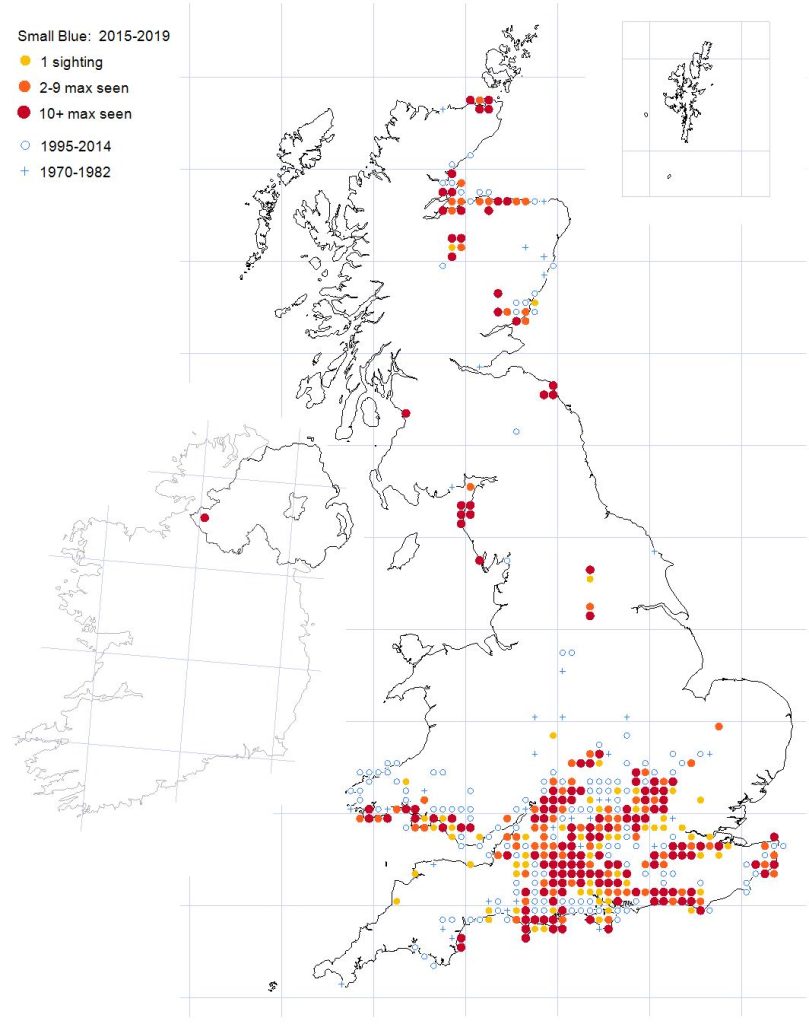
Small blue distribution map (c) Butterfly Conservation https://butterfly-conservation.org/butterflies/small-blue
Habitat and feeding
The small blue relies on grassland habitats that provide shelter for the adults and early successional conditions where kidney vetch – the sole foodplant of the small blue butterfly – can flourish. In Scotland most colonies are found on steep coastal grasslands and sand dunes but some colonies occur on man-made habitats including quarries, disused railway lines and tracksides
The caterpillar’s sole food plant is kidney vetch (Anthyllis vulneraria). Both sexes nectar on various flowers including common bird’s-foot-trefoil (Lotus corniculatus), kidney vetch and horseshoe vetch (Hippocrepis comosa). Males will also take salt and minerals from damp mud and animal droppings.
Conservation status
- Protected in the UK under the Wildlife and Countryside Act, 1981.
- Priority Species under the UK Post-2010 Biodiversity Framework.
Threats
The small blue is under threat from the increasing isolation of populations due to its reliance on kidney vetch, an early successional plant. Early successional plants are the first to grow in areas of disturbed ground, low in nutrients. As time passes and nutrient levels rise the kidney vetch is lost and replaced by more vigorous plants. Restoring connections between colonies is therefore vital for the long-term conservation of this species.
What Species on the Edge is doing
-
Increased monitoring and surveying, to better understand the species’s needs at all stages of the lifecycle
-
Raising awareness among landowners and the public of the butterfly
-
Working with landowners to better improve connectivity and quality of habitat
Our work for the small blue
Watch
Small blue butterfly with Mike Slater – Species on the Edge Winter Talk Series
In this talk from February 2025, we are joined by butterfly expert, Mike Slater, to learn more about the small blue.
Mike has been a member of Butterfly Conservation for over 50 years and has advised over 300 landowners on small blue conservation and has invented many practical techniques, such as Butterfly Banks. Mike ran BC’s ‘Small Blue Project’ between 2009-2011. At the time of the project the small blue was heading for regional extinction in Warwickshire with only 3 colonies left. There are now up to 30 colonies in the region.
In this talk, Mike delves into his work for the small blue in Warwickshire, sharing his learnings and guidance on small blue habitat management, relevant to anyone across the UK interested in small blue conservation.
If you live on either the north or east coast of Scotland and are interested in helping your local small blue populations, get in touch with your local Species on the Edge officer who can help you get stuck in:
North Coast: Sarah Bird – sarah.bird@plantlife.org.uk
East Coast: Tracy Munro – tmunro@butterfly-conservatio.org
Resources
- Small blue butterfly | Butterfly Conservation
- Small blue priority species factsheet | Butterfly Conservation
pdf 2.42 MB - How to grow Kidney Vetch | Species on the Edge
- East Coast Lepidoptera management recommendations | Species on the Edge
- Bare ground for Butterflies and Moths | Butterfly Conservation
pdf 10.27 MB - Seeding and plug-planting for butterflies | Butterfly Conservation
pdf 682 KB
